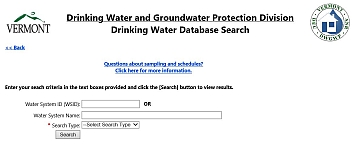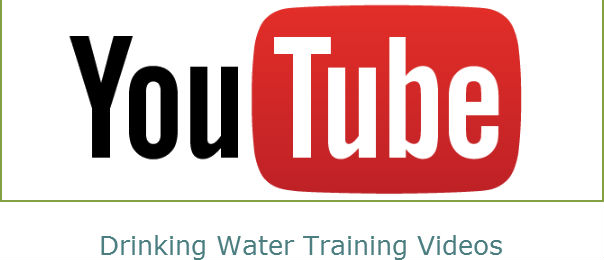Drinking Water Related Rules
For more information about Draft Water Supply Rule visit the Laws and Regulations page
Rules and regulations that apply to drinking water systems in the state of Vermont. This includes state statutes as well as federal guidelines that apply to regulated drinking water systems in Vermont.
Water Supply Rule - For Public Water Systems that serve 25 or more people
Revised Water Supply Rule
Federal Drinking Water Rules
Drinking Water Regulations EPA site
Code of Federal Regulations Title 40 Chapter I Parts 141-143
Groundwater Protection Rule & Strategy
Chapter 12 - Groundwater Protection Rule and Strategy
Avoiding Filtration of Surface Water and GWUDI of Surface Water in Vermont
Vermont State Statutes
Vermont State Statutes On-Line Website
Title 10 VSA Chapter 56 - Public Water Supply
Title 10 VSA Chapter 48 - Ground Water Protection
Title 10 VSA Chapter 201 - Administrative Environmental Law Enforcement
Title 9 VSA Chapter 63 Subchapter 1C - Lead in Consumer Products
Other Tools and Information
Tools for use by Water System Operators or Engineering groups looking to work with the Public Drinking Water Program of the Division. Essentials for water systems of every size:
- New FTP data upload instructions
- O&M Template and Guidance
- Update Water System Contact Information
- Public Water System Forms & Applications
Sanitary Surveys
The Drinking Water and Groundwater Protection Division conducts sanitary surveys no less frequently than every three years for community water systems and in-state bottled/bulk water facilities, and every five years for non-community water systems. At a minimum the survey must address the following eight sanitary survey components:
- Source
- Treatment
- Distribution system
- Finished water storage
- Pumps, pump facilities, and controls
- Monitoring, reporting, and data verification
- System management and operation
- Operator compliance with State requirements
The State may conduct more frequent sanitary surveys for any system.
Following the survey, the surveyor writes a letter following the survey to the water system which includes a proposed compliance schedule to address any significant deficiencies identified during the survey. The system has 30 days from the date of the letter to respond to the survey letter. System deficiencies need to be corrected within 120 days of the notification letter or in accordance with an alternate schedule approved by the Division.


